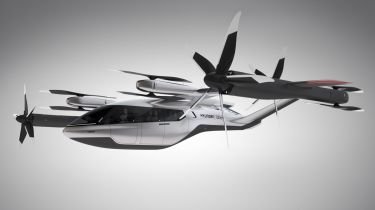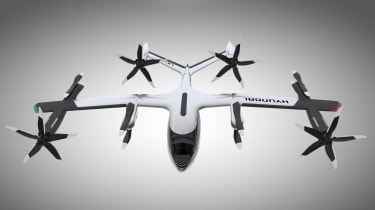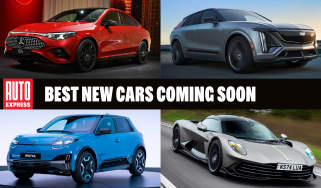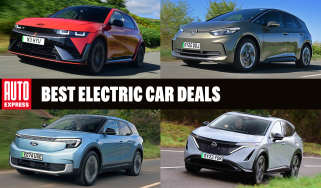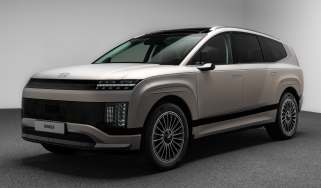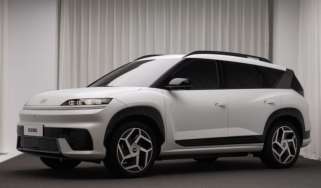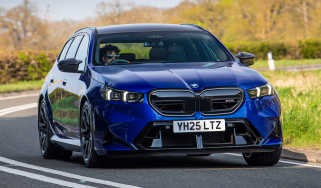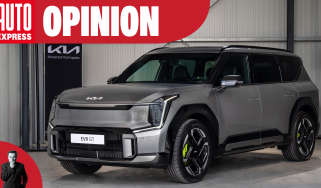Hyundai to launch autonomous electric flying vehicles by 2028
Hyundai plans for passengers to simply hail its upcoming flying vehicles from “vertiports” using an app, just as they would a conventional taxi
Hyundai will soon throw its weight behind the advanced air mobility (AAM) sector, with plans to launch an electric flying vehicle in 2028. The company will then expand the segment during the 2030s, with the aim of creating a new ride-hailing service based around the tech.
The company’s new aircraft will have vertical take-off and landing (VTOL) capability, a bit like a Harrier Jump Jet. But, instead of burning kerosene, it’ll move around using rotors that are powered by electric motors and a battery pack.
Hyundai also says the aircraft will be autonomous-capable, and that’ll be seating inside for up to five passengers. However, the vehicle won’t be able to take its passengers particularly far, with the Korean firm saying it’s been designed for “urban and urban-adjacent routes.”
The idea is that city-dwellers hail the new eVTOL vehicle using an app, jump on board at one of Hyundai’s “vertiports,” travel across the city to a landing site near their destination, then disembark and use an eScooter to get to their final destination. The firm’s future vision is detailed in the short video above.
Hyundai gave us an insight into its vision at the 2020 Consumer Electronics Show, with the flying S-A1 Personal Air Vehicle (PAV) concept, and we expect the vehicle detailed in the company’s latest announcement will closely resemble this prototype.
The S-A1 is a small, electrically powered, multi-rotor VTOL aircraft, designed specifically for city trips. As such, it was engineered to be as quiet as possible, for the benefit of both passenger comfort and reduced noise pollution. So the motors have less weight to heave around, Hyundai also planned for the vehicle to be made of carbon fibre composites.
Hyundai claims that the five-seat S-A1 would be capable of cruising at 180mph, at a maximum altitude of 2,000 feet for trips up to 60 miles long, enabling inter-city travel. When the concept was first unveiled, Hyundai said it wasn’t fully autonomous, but the company has mentioned that the need for a pilot could be phased out in the future.
The S-A1 concept was wrapped up in Hyundai’s partnership with Uber. Eventually, the duo hope to develop an air-based ride hailing network based on the technology. Hyundai has also signed a deal with the Canadian Advanced Air Mobility Consortium to help develop some of the policy for the programme and get its concept off the ground.
Hyundai plays a key role in the UK government’s Future Flight Challenge, too, which was set up to explore the feasibility and promote the uptake of AAM technology and green air travel at scale. The brand even plans to open a prototype vertiport next year, right here in Britain.
The firm already plays a role in the UK government’s Future Flight Challenge, which was set up to explore the feasibility of AAM technology. The brand even plans to open a prototype vertiport in Britain next year.
Most recently, Hyundai has restructured its electric flying vehicle offshoot business into its own entity, under the new name of Supernal. So it looks like the firm is taking this seriously.
Ben Diachun, Chief Technical Officer for Supernal, said: “We’re developing a commercially viable Advanced Air Mobility product from the start, designing and manufacturing our vehicle to the highest safety, noise, efficiency, and affordability standards.
“Our growing team, which includes veterans of aerospace, automotive, and other deep-tech industries, is engineering sustainable vehicles that have the potential to evolve how we live, work, and play.”
Hyundai’s purpose-built vehicles
Hyundai also launched its concept for Purpose Built Vehicles at CES 2020, which were designed to work alongside the VTOL vehicles in the company’s future mobility vision.
The boxy electric pods are inspired by San Francisco cable cars – and their main purpose is to make ride-hailing a more personalised service. They’re stored under the S-A1’s docking station, (which Hyundai calls the Hub), and they’re designed to carry passengers from the helipad to the city.
The bodies sit atop an autonomous platform, and they can be disassembled and customised at the docking station. They have adjustable lengths of between four and six metres, to suit the needs of the body, and the cabin space is completely modular.
Hyundai says this latter feature means the Purpose Built Vehicles can be used as mobile function rooms, autonomous delivery vehicles or even commercial spaces, with specialised variants offering service as small pharmacies, hotel rooms or cafes, for example.
Now click here to read about Hyundai’s upcoming rival for the Tesla Model 3 – the Ioniq 6…
Find a car with the experts

